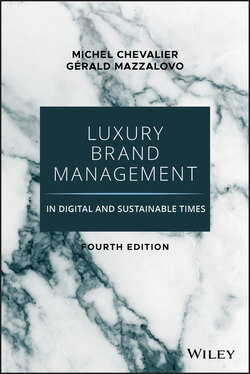Читать книгу Luxury Brand Management in Digital and Sustainable Times - Michel Chevalier - Страница 46
A Limited Cash Need
ОглавлениеAs soon as a brand achieves sales above break-even, life becomes much easier. Margins are very high, and when all fixed costs are covered, a large part of the margin becomes profit.
In manufacturing, when sales develop it is necessary to invest in new factories. In luxury it is always possible to subcontract the production or the additional production. Accounts receivable are another problem area for most businesses. When the brand operates its own stores, it is paid in cash or other immediately recoverable payment methods.
What about inventory, then? In fact, as the product gross margin is quite high, inventories at cost are not too difficult to finance when the level of sales is satisfactory. The major financial difficulty is to make sure inventory is available everywhere in the world, in all of the brand's own stores or in those of its distributors. This difficulty is, of course, much greater for newly established companies than for those with a very high and growing level of sales.
Another difficulty in the area of fashion products is that of returns: at the end of a season, some items must be either sold or returned. For small brands, this is a major issue because they are obliged to start with a large number of products each season to bring variety to their customers: with a small volume of sales, bargain sales end up very big. For high-volume brands, a fashion distributor will sell 80–85% of the collection at full price and 15–20% at bargain prices. For difficult brands, the financial picture is not the same: up to 65% of total volume will be at bargain prices. So, small companies have to deal with the issue if they want to ensure that their distributors will buy the next season's products. This often entails giving special discounts to distributors if they are to avoid having to take returns, knowing that products that are returned are either sold through factory outlets or even destroyed. This is a major issue for small and medium-sized brands. For large brands, returns are a small part of the volume, and bargain sales to staff or press are usually sufficient to dispose of any outdated merchandise.
The only very important cash need relates to the opening of stores under the brand name. This need does not exist in cosmetics, wines and spirits, and in most watch brands, but it is an essential part in the development of a fashion or accessories brand.
The conclusion is very simple: luxury is a great and very profitable business for those who are successful. It is a very difficult business for the others. And it is also very easy to go from a very profitable situation to major losses as soon as the sales begin to decrease when products are no longer adapted to the consumer and, for some reason, no longer fashionable.
A luxury-goods business can therefore be summed up as either win-all or lose-all. It is great for the top profitable brands. It is difficult for those striving to make an impression. It is a nightmare for those who cannot afford a flagship store in Paris, Milan, New York, Tokyo, and Beijing and who have to keep losing money in some of their activities to maintain the dream and the glitter around their brands.
